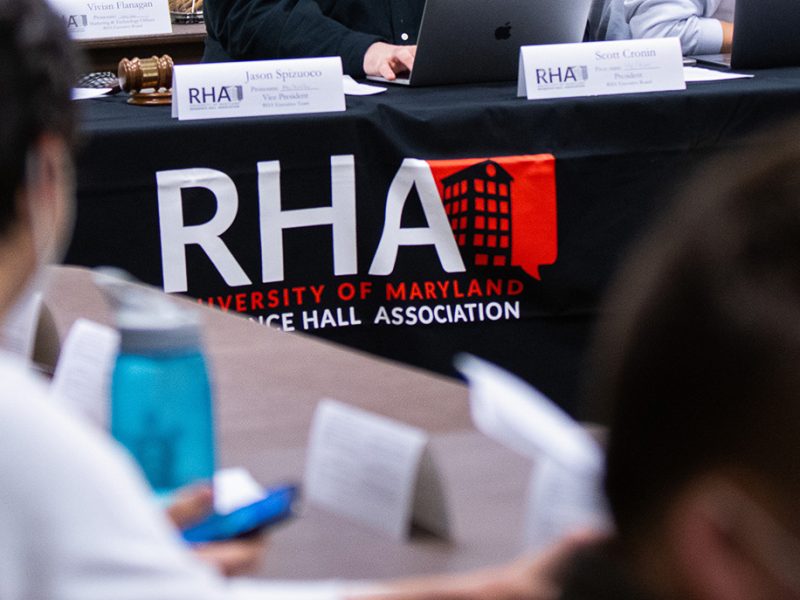By Makea Luzader
For The Diamondback
One evergreen tree ignited fiercely and was quickly engulfed in flames. A second tree burned more slowly, with only part of it scorched by the blaze.
The burning trees were part of an annual demonstration by the University of Maryland’s fire protection engineering department to educate people about the fire hazards associated with the millions of Christmas trees that are sold each year. The demonstration was held indoors in the department’s lab, with lab workers and members of the press in attendance.
Home Depot donated two trees for the event. One was a well-watered tree, which barely caught on fire. The other was a dry tree that had been sitting out for 16 days, which burned down completely in minutes.
Isaac Leventon, a fire research scientist at the National Institute of Standards and Technology, started the tradition five years ago as a project for high school students to estimate the intensity and burning time of the fires. But after news outlets reached out, it turned into a safety demonstration, he said.
[Read more: Fire burns down single-story College Park home]
There are about 200 tree fires a year in the United States, Leventon said, but a fire started by a Christmas tree is four times more likely to kill someone than other types of home fires.
Leventon, a university alumnus, stressed the importance of keeping live trees well-watered and away from heat sources such as open flames, electric heaters, and unsafe lighting as well as being sure to dispose of the tree as soon as possible.
“What makes [tree fires] so dangerous — and why we keep doing this every year — is they are particularly deadly because they grow so quickly and they grow so large,” he said.
The trees used in the demonstration were five to six feet tall, and the heat from the fire could be felt across the room. They were Fraser firs, the same species as a 15-foot-tall tree that caught on fire in Annapolis in 2015, burning down a house and killing four children and their two grandparents.
[Read more: A year after the Fuse 47 fire, a new apartment complex is being built in its place]
The fire in Annapolis was more than seven times bigger than the one Wednesday morning, and took only minutes to engulf the house, Leventon said.
“Because of the holiday season … a lot of people use live trees at homes, and we want to highlight some of the safety hazards that come along with using trees, especially with using very dry trees at home,” said Fernando Raffan-Montoya, the lab manager at the fire protection engineering department.
Several students who keep live trees in their houses during the holidays said they were aware of the dangers associated with dry trees.
Ellie McFarland, a junior aerospace engineering major, said her family is sure to minimize the risk of fire by watering the tree frequently and keeping it away from dangerous heat sources.
“We’re pretty safe … with the outlets and wires and everything,” McFarland said.
Nicole Lopez, a freshman communications major, said her family waters the tree a couple of times every day. They have a tradition of setting up their tree each year, which they get from a nearby church.
“We try to make it like a dinner-type scene. We eat dinner and we do the tree all together and gather around the fire,” Lopez said.
Leventon also organizes a competition between different science labs and universities around the world to predict the burning time and intensity of a Christmas tree. This year, he received more than 100 submissions from around 14 countries, including Denmark and Sweden.
Leventon posts videos of the tree burnings online, and he said the comment sections often show the positive impact that these demonstrations can have.
“Especially last year, we had a lot of good feedback for the burnings we did here and over at NIST of ‘Oh, I had no idea you were supposed to water it,’ or ‘I’m gonna go water my tree right now,’” Leventon said. “There’s a couple more people at least that are gonna take care of it and hopefully not be at as much of a risk.”



